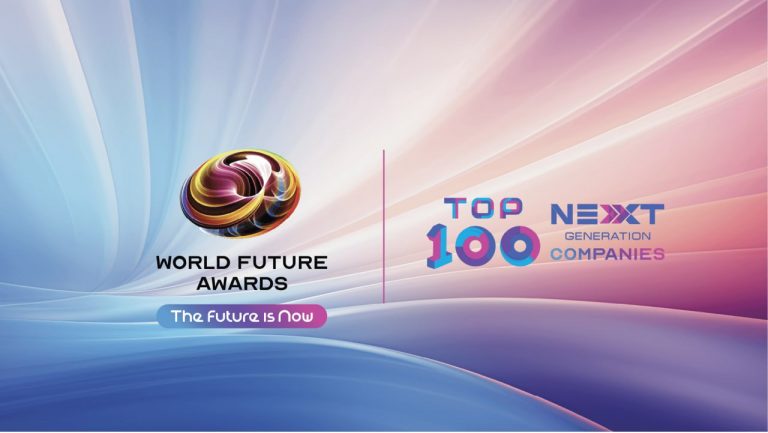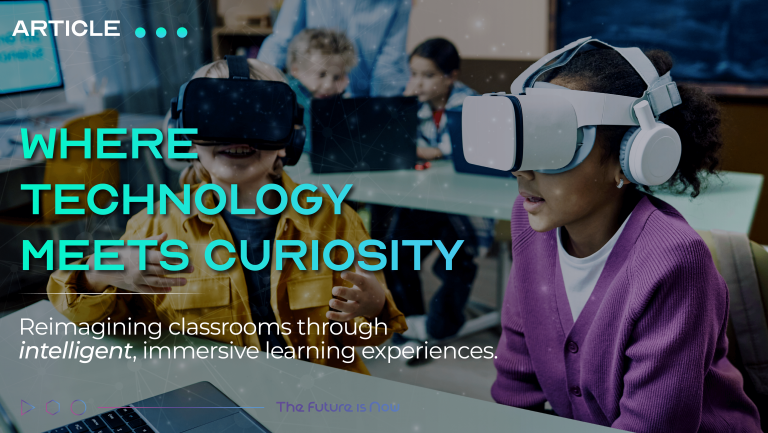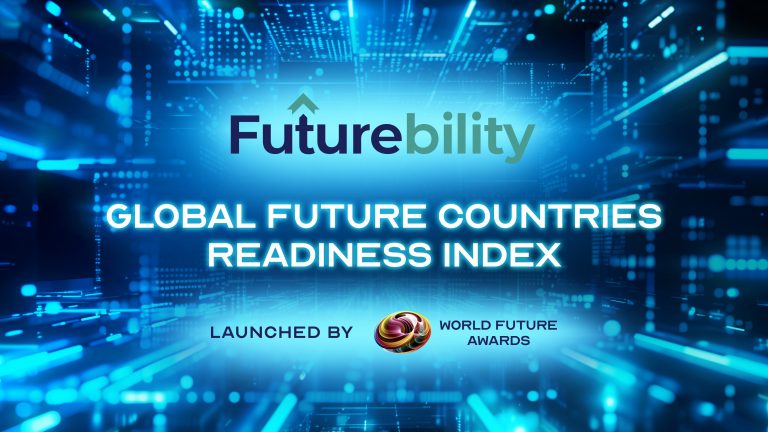
Redefining Community Growth in Web3: An Interview with Charles Wayn, Co-Founder of Galxe and Gravity
In a rapidly evolving digital landscape where web3 innovation reshapes how communities interact and engage, Galxe has emerged as a transformative force. In 2025, the company received its first World Future Awards for Best Web3 Growth Platform.
Web3 businesses face growing challenges with fragmented tools, disjointed user experiences, and ineffective engagement. Galxe solves this with a secure, all-in-one platform that turns user base engagement into scalable, data-driven growth powered by automation and identity intelligence. Built on Gravity—Galxe’s ultra high-speed Layer 1 blockchain—the platform unifies onboarding, identity verification, automation, and user engagement into one seamless experience. Galxe has evolved into the largest community-building platform in web3, boasting over 34 million users and has partnered with over 7,000 brands in the space, such as Coinbase, Polygon, Forbes, and Avalanche.
Leading this innovation is Charles Wayn, Co-founder of Galxe and Gravity, and a prominent blockchain entrepreneur. With a clear vision for scalability, decentralization, and user-centric design, Charles has helped shape Galxe into a cornerstone of the web3 ecosystem. Today, we sit down with Charles to explore his entrepreneurial journey, the breakthroughs powering Galxe, and the future of digital identity and community building.
Questions
WFA: Charles, what inspired you to co-found Galxe, and what gap in the Web3 ecosystem were you aiming to fill at the time?
When we started Galxe in early 2021, my co-founder Harry Zhang and I had been experimenting a lot with DeFi, like many others in the space at the time. We were fascinated by the possibilities of web3 and kept asking ourselves: beyond speculation, how could NFTs and DeFi actually be used to create real utility and impact, especially for community building?
That led us to our first idea: NFT-as-a-service. We wanted to give businesses a simple way to create and distribute NFTs, not just as collectibles, but as tools for recognizing status, achievements, and membership within a community. What really clicked for us was the potential to connect NFTs to actual user behavior. That’s where the concept of “credentials” came in, essentially behavioral data that could be composable, verifiable, and meaningful.
We then identified a bigger gap in Web3 around identity and contribution. Projects were struggling to understand who their real community members were. Not just wallet addresses, but real people actively participating, contributing, and building. Galxe set out to bridge that gap: to help projects recognize and reward meaningful engagement in a decentralized way. That mission still drives everything we build today.
WFA: Galxe has grown into a platform with over 34 million users and has partnered with over 7,000+ crypto brands. What have been the biggest challenges—and triumphs—on this journey?
The numbers are a testament to what we’ve built, and they prove that our model works. Which is why Galxe has become the leading community-building platform in Web3. But none of this would be possible without the incredible team we have. From engineering to ecosystem to marketing, our team is relentless in building innovative solutions and staying ahead in an industry that’s constantly evolving.
One of our biggest triumphs has been our ability to stay deeply connected to the community. We listen. We iterate. And we ship what people need. At the end of the day, community is what makes or breaks a Web3 project. That principle is at the core of everything we do.
Of course, the excitement of this space comes with challenges. As an industry, we still have work to do when it comes to improving user experience and building greater trust. We’ve seen how complex onboarding or security concerns can become real entry barriers for newcomers. That’s why we’ve always prioritized both usability and safety, like a seamless UX and robust security infrastructure, making Galxe accessible and trustworthy for everyone, from first-time users to enterprise-level partners.
So, whether it’s helping a brand launch their first campaign or supporting an ecosystem’s long-term growth, our goal remains the same: an essential growth engine for web3 businesses — not just a helpful tool, but the central infrastructure that powers how web3 ecosystems scale, engage, and retain users.
WFA: Gravity, your new Layer 1 blockchain, boasts incredible performance. What sets Gravity apart from other blockchains, and why was building it a strategic priority for Galxe?
Gravity was purpose-built to push the boundaries of blockchain performance and user experience because we knew that to scale web3 adoption, we needed infrastructure that could actually keep up with demand. What sets Gravity apart is its high-performance Grevm engine, the fastest open-source parallel EVM available today. In benchmark conditions, it delivers up to 16.57 gigagas per second, with 1 gigagas/second targeted in real-world use, resulting in a 5.5× performance boost in high-conflict transaction scenarios compared to traditional engines.
We also engineered sub-second transaction finality, which is a game-changer for end users. It eliminates the lag and uncertainty that have plagued blockchain UX for years. At the core of this performance is Gravity’s innovative 5-stage pipelined architecture, which allows for parallel execution and consensus. This design isn’t just about speed; it enables scalable, decentralized interoperability across multiple blockchain ecosystems at lower cost and higher throughput.
Strategically, Gravity is foundational to Galxe’s mission to power growth in web3. Whether you’re a protocol, dApp, or ecosystem partner, you need infrastructure that can deliver on scalability.
WFA: Galxe Quest has powered over 1.1 billion quests. How does this product drive community engagement, and what does that say about the evolution of loyalty in decentralized spaces?
Galxe Quest drives engagement because it fundamentally flips the traditional loyalty mode. Instead of locking users into a brand’s ecosystem, it rewards participation with onchain assets users actually own. That simple shift from centralized to user-owned makes all the difference.
With every quest completed, users collect real value: tradable NFTs, interoperable points, and a transparent onchain history that’s theirs to keep and use across web3. That kind of ownership fosters deeper loyalty because users aren’t just being rewarded, they’re being recognized.
To me, the 1.1 billion+ quests reflect a broader shift in web3, loyalty isn’t just about frequency, it’s about freedom, transparency, and belonging. And that’s exactly what Galxe is building.
WFA: Galxe has a streamlined token distribution tool that simplifies airdrops for both projects and users – Earndrop. How does Earndrop’s automation and centralized claiming experience improve community engagement and user retention compared to traditional airdrops?
Earndrop fundamentally improves community engagement and user retention by addressing one of the biggest friction points in web3, token distribution. Unlike traditional airdrops that often require custom dev work, fragmented claim pages, or multiple user touchpoints, Earndrop offers a fully automated, cohesive experience. Users can check eligibility and claim tokens from multiple campaigns and across multiple chains in one place, which naturally encourages ongoing platform engagement.
On the project side, Earndrop is built on the same intelligent framework and highly-scalable infrastructure that powers Galxe Quest. That means projects can confidently distribute assets, whether it’s for a TGE, loyalty reward, or early access campaign, without worrying about performance, manual processes, or security gaps. It completes the distribution lifecycle that Quest starts, giving teams a flexible and secure way to convert on-chain actions into tangible token rewards.
Ultimately, Earndrop turns what was once a tedious backend process into a strategic growth tool. By eliminating distribution headaches and increasing transparency, it empowers web3 projects to focus on deeper community building and smarter token launch strategies.
WFA: Galxe recently launched ‘Starboard’, a data-driven growth and analytics tool. Why did the team build this solution, and why now?
We built Starboard to address a major gap we saw after working with thousands of projects. Web3 teams could attract users, but they couldn’t always identify who truly mattered.
Galxe helped kickstart growth for countless protocols through Quests, bringing millions of users into web3. But as the space matured, the conversation shifted from how many showed up to who actually stayed, contributed, and created value. Teams began asking smarter questions:
- Who brought in liquidity?
- Who kept showing up as a builder or brand advocate?
- Who’s driving real traction?
The answer wasn’t always visible; however, Starboard solves this by giving projects a unified view of onchain and offchain contributions, mapped directly to outcomes like protocol usage, developer activity, and community strength. It transforms fragmented campaign data into a clear leaderboard of impact, so every reward is tied to real progress, not just participation.
We didn’t build Starboard to replace Quests; Starboard is a complementary tool to Quest, completing the journey from first touch to long-term alignment. In web3, growth means building with the right people, and Starboard helps teams track what matters and reward real impact.
WFA: Galxe has evolved into an all-in-one platform, powered by analytics, automation, and engagement solutions. How do you see this integrated approach shaping the future of Web3?
Web3 has long struggled with fragmentation. Teams are often forced to piece together disconnected tools and systems just to drive basic growth. Galxe was built to change that. Our integrated approach brings together identity, analytics, engagement, and now distribution, meaning that projects no longer have to choose between scalability, usability, and depth of insight.
By unifying the core elements of modern growth into a single platform, we empower teams to build smarter strategies, drive stronger community participation, and make decisions backed by real behavior-based data. It’s not just about convenience; it’s about unlocking a new standard for how web3 projects should launch, grow, and scale.
We believe the future of Web3 will be shaped by platforms that prioritize simplicity, trust, and community. Galxe’s model reflects that vision, offering a fluid, secure, and future-ready foundation for builders and users.
WFA: Looking ahead, what excites you most about the next 12 months for Galxe, and what can the web3 community expect from your team?
The next year is an important one for us. With a product stack that now supports the full web3 growth cycle, we’re focused on collaborating with more teams that are building thoughtful, useful tools in the space. One major milestone ahead is the mainnet launch of Gravity, which we see as a meaningful step forward for both Galxe and the broader ecosystem. We’re continuing to develop tools that are more flexible, better integrated, and focused on helping teams drive real impact.
WFA: Thank you, Charles, for sharing your insights and pioneering vision. Your leadership continues to inspire innovation across the web3 space and beyond!
Visit https://www.galxe.com/ for more on the award-winning company.
MORE NEWS

Next Generation Companies 2025

The Future of Learning is Hybrid, Tech-Enhanced & Human-Centric – Interview with Dora Hrkac, WFA Board Member

Connected Futures: The Rise of Smart Homes

Driving Global Change Through Marketing Intelligence: An Interview with Tonia Maneta of Bizzdesign

Beyond Borders: The New Era of Remote Learning and Global Education Access

Reimagining the Classroom: How EdTech Innovators Are Building the Future of Learning

World Future Organization Launches the 2025 Global Future Readiness Index for Countries under the Futurebility Program
NEWSLETTER
Sign up to learn more about our project and to stay up to date.

